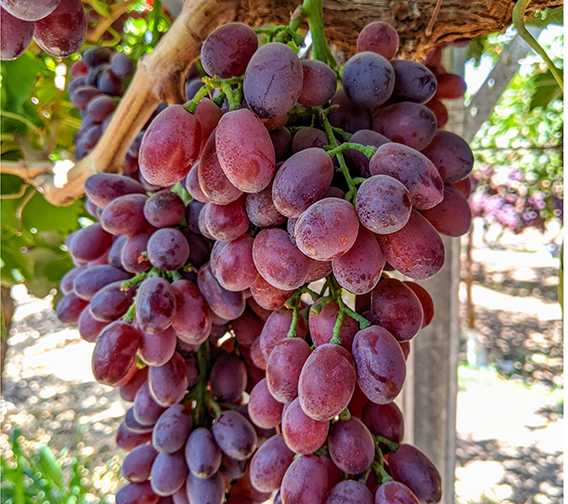Organic Beekeeping: A Sweet Alternative for Produce Growers
When it comes to organic beekeeping, there is plenty of good news prefaced by a bit of bad news, according to Dr. Robyn Underwood, an Assistant Research Professor with Penn State Extension.
First the bad news: “It is extremely difficult to have certified organic honey for sale,” Underwood says, the key word being “certified.” Certification would require large swaths of land that fall under organic management, a “nearly impossible” prerequisite in the mainland U.S., she says.
Specifically, a potential certified organic honey producer would have to make maps of his or her farm and account for a 3-kilometer radius in which 1.86 miles in every direction included organically acceptable water, nectar, pollen, and propolis, the resinous substance collected by honeybees from tree buds to seal honeycombs. Once the grower could prove as much, he or she would then need an additional 1.2 miles of no high-risk activities, which would preclude residential land.
Fortunately, growers can still manage bees using acceptable organic practices.
“We cannot label our honey as certified organic. But if you use organic methods, you can still, at a farmers’ market, talk to your customers and tell them, ‘I never use synthetics. I never use antibiotics. I have my bees on an organic farm,’” Underwood says. “Whatever those great things are, you can still talk about them. It’s just not an official term with an official label.”
PREVENTIVE HEALTH CARE
The National Organic Standards Board (NOSB) mandates that producers “must not accept the presence of pests, parasites, or disease without initiating efforts to restore the health of the colony.”
The archenemy of honeybees is the Varroa destructor mite, which, as a vector of deadly viruses, can collapse an entire bee colony.
Underwood’s research at Penn State — specifically the COMB (Conventional and Organic Management of Bees) project, which started in May 2018 — has com-pared side by side three management systems: organic, conventional, and treatment-free. The organic system includes mite treatments comprised of formic acid, oxalic acid, and thymol (Apiguard, Vita-Europe) as well as some cultural controls.
“What we’ve found is that, by using those three organic chemicals, we have excellent mite control, excellent winter survival, the highest honey yields, and the most profits,” Underwood says.

Varroa mites are a danger to bee colonies. For organic beekeeping purposes, alternative protection methods must be used. Here, an Apiguard thymol application is put in action on a managed beehive.
Photo by Steve Berner
Regarding profitability, all three systems, after feeding and treating and then feeding again in the fall, were in the red during the first year (2018), when honey was not yet harvested. In the second year (2019) “we finally started to harvest some honey, and we finally started to make a little bit of money,” Underwood says of the organic system. And in 2020, upon selling some bees because the research team had not intended to surpass its original number of bees, the organic management system turned quite profitable, according to Underwood.
MITE TREATMENTS
Underwood’s team monitored for mites during the warm months (March through October). Colonies were visited every two weeks, with alcohol washes being performed every other visit to determine the presence of Varroa mites.
“Our stakeholders suggested that we use a 1% threshold for treatment,” Underwood says. “You don’t have to use 1%, but we used 1% and treated all of the organic colonies in that apiary when one of them was over.”
Underwood recommends this schedule:
April/May: While still chilly, oxalic acid is used. Both dribble and vapor modes work well, Underwood says, but the specific situation dictates matters. In real-time moments in front of spectators, she prefers dribble. But if she is on her own for a repeat treatment or mid-winter treatment, she chooses the vapor method while donning a gas mask. “I don’t want to put anyone in harm’s way,” she says. Label recommendations for dribble call for mixing 35 grams of oxalic acid crystals into 1 liter of a 1:1 syrup and then using a syringe to apply 5 milliliters of solution in between each beehive frame, up to a total of 50 ml. With vapor, she uses 1 gram of oxalic acid.
June/July: As the weather warms, Underwood recommends formic acid; either Mite Away Quick Strips or Formic Pro (NOD Apiary Products). For her project, she has exclusively used Formic Pro, which are commercially available gel pads.
“Of all the treatments I’m suggesting here, I actually like the fact that formic acid zips you in the nose — you know that you are near it, and you get away very quickly,” she says. “Formic acid is the only treatment that anyone has ever come up with that actually gets to the mites under the cap-pings. That’s really important during June and July when there’s lots of brood present. It is effective when brood is present, and also you can have your honey supers (additional boxes) on. That’s a really, really big deal.” One caveat per Underwood: Resist using in extremely high temperatures.
Mid-August: In preparation for over-wintering, colonies are broken down to three medium boxes, drone frames are removed, and every colony — regardless of mite count — is treated with either Formic Pro or Apiguard. The latter is preferred if formic acid was used earlier in the summer. Growers can buy premeasured sachets containing Apiguard or purchase tubs of the product, which is then applied to index cards that are placed in the boxes. A six-week program starts with a Day 1 application, followed by a reapplication after two weeks, followed by four weeks of pause.










